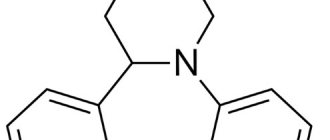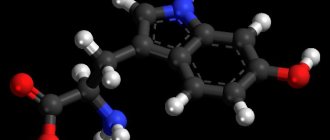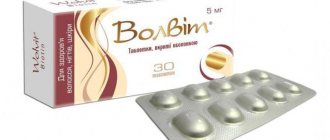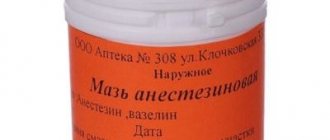Write a review
Reviews: 0
Manufacturers: Schering-Plough Corp. (USA)
Active ingredients
- Ezetimibe
Disease class
- Atherosclerosis
- Pure hypercholesterolemia
- Other specified metabolic disorders
Clinical and pharmacological group
- Not indicated. See instructions
Pharmacological action
- Hypolipidemic
Pharmacological group
- Other lipid-lowering drugs
Medicine "Ezetrol": photo, description of composition
First, you should familiarize yourself with the basic information about this drug. The drug "Ezetrol" is produced in the form of small capsule-shaped tablets of white color (sometimes with a slight tint of beige or yellow). The tablets are packaged in convenient blisters of 10 or 14 pieces.
The main active substance of this drug is ezetimibe. One tablet contains 10 mg of this component. Of course, other ingredients are present: lactose monohydrate, sodium lauryl sulfate, croscarmellose sodium, magnesium stearate, povidone and microcrystalline cellulose.
pharmachologic effect
One Ezetrol tablet contains 10 mg of the active substance – ezetimibe. The following are used as excipients: microcrystalline cellulose, sodium lauryl sulfate, povidone, magnesium stearate, croscarmellose sodium, lactose monohydrate.
Ezetrol belongs to the group of lipid-lowering drugs. The drug is intended for oral administration. The mechanism of action of the drug differs from other analogues of Ezetrol from the lipid-lowering class of drugs, such as statins, fibrates and styrene of plant origin. When it enters the small intestine, the drug concentrates in the brush border of the small intestines and interferes with the absorption of cholesterol, reducing the flow of cholesterol into the liver, due to which its concentration in the liver decreases.
Ezetrol increases the excretion of bile acids. A two-week clinical trial involving 18 patients found that taking Ezetrol reduced cholesterol absorption by 54%. Thus, the likelihood of developing atherosclerosis is reduced. Research has established that mortality caused by cardiovascular diseases is directly dependent on total cholesterol levels, and accordingly, reducing it reduces the level of morbidity and mortality.
How does the drug affect the body?
"Ezetrol" is a drug intended for oral administration. It is a representative of the new generation of lipid-lowering drugs, so its mechanism of action is different (for example, fibrates, statins, bile acid sequestrants act differently on the human body).
Ezetimibe is localized in the brush border of the small intestine. Here it slows down the absorption of cholesterol. As a result of this effect, much less cholesterol enters the liver from the intestines. Thus, natural metabolic processes are launched - cholesterol reserves in the liver are reduced, this substance is removed from the blood much faster.
It is worth noting that the drug "Ezetrol" does not affect the processes of excretion of bile acids and does not inhibit the reactions through which cholesterol is synthesized in liver tissues.
Quite often, taking Ezetrol tablets and statins is combined. Statins are known to reduce the rate of cholesterol synthesis in the liver. Thanks to the complex interaction of these two drugs, it is possible to quickly reduce cholesterol levels in the blood and normalize the functioning of the body.
Ezetrol
Lipid-lowering drug for oral administration. Selectively inhibits the absorption of cholesterol and some plant styrenes in the intestine. The mechanism of action of ezetimibe differs from that of other classes of lipid-lowering agents (eg, statins, bile acid sequestrants, fibrates, and plant styrenes).
When entering the small intestine, ezetimibe is localized in the brush border of the small intestine and interferes with the absorption of cholesterol (C), which leads to a decrease in the supply of C from the intestine to the liver, thereby reducing the reserves of C in the liver and increasing the removal of C from the blood. Ezetrol® does not increase the excretion of bile acids (unlike drugs that bind bile acids) and does not inhibit the synthesis of cholesterol in the liver (unlike statins). In a two-week clinical study that included 18 patients with hypercholesterolemia, Ezetrol® reduced the absorption of cholesterol in the intestine by 54% compared to placebo.
Statins reduce the synthesis of cholesterol in the liver. Due to two different mechanisms of action, drugs of these two classes, when administered together, provide an additional reduction in cholesterol levels. Ezetrol®, prescribed in combination with statins, reduces total cholesterol, LDL-C, apolipoprotein-B and triglycerides and increases HDL-C in patients with hypercholesterolemia to a greater extent than ezetimibe or simvastatin, prescribed separately.
Clinical studies have shown that elevated levels of total cholesterol, LDL cholesterol, and apolipoprotein B, the main protein component of LDL, contribute to the development of atherosclerosis. In addition, reduced HDL-C levels are associated with the development of atherosclerosis. Epidemiological studies have established that cardiovascular morbidity and mortality are directly related to the level of total cholesterol and LDL cholesterol and inversely related to the level of HDL cholesterol. Like LDL, lipoproteins rich in cholesterol and triglycerides, including VLDL, LDLP and remnant, can also contribute to the development of atherosclerosis.
A series of preclinical studies were conducted to determine the selectivity of ezetimibe in inhibiting cholesterol absorption. Ezetimibe inhibited the absorption of 14C-cholesterol and had no effect on the absorption of triglycerides, fatty acids, bile acids, progesterone, ethinyl estradiol, and fat-soluble vitamins.
Pharmacokinetics
Suction
After oral administration, ezetimibe is rapidly absorbed and extensively conjugated in the small intestine and liver to form a pharmacologically active phenolic glucuronide (ezetimibe glucuronide). Cmax of ezetimibe glucuronide is achieved after 1-2 hours, ezetimibe - after 4-12 hours. The absolute bioavailability of ezetimibe cannot be determined, since this compound is practically insoluble in water.
Concomitant ingestion of food (both high-fat and low-fat) does not affect the bioavailability of ezetimibe when taken orally at a dose of 10 mg.
Distribution
Plasma protein binding of ezetimibe and ezetimibe glucuronide is 99.7% and 88-92%, respectively.
Metabolism
Ezetimibe is metabolized primarily in the small intestine and liver by conjugation with a glucuronide (phase II reaction) followed by excretion in the bile. Minimal oxidative metabolism (phase I reaction) is observed in all species studied. Ezetimibe and ezetimibe glucuronide are the main substances detected in plasma, accounting for approximately 10-20% and 80-90% of the total drug content in plasma, respectively. Ezetimibe and ezetimibe glucuronide are slowly cleared from plasma under conditions of intensive enterohepatic recirculation.
Removal
After oral administration of 20 mg of 14C-labeled ezetimibe, the level of total ezetimibe in the blood plasma was 93% of the total radioactivity of the blood plasma. After 48 hours, radioactive traces of the drug were not detected in the blood plasma.
T1/2 of ezetimibe and ezetimibe glucuronide is about 22 hours.
Within 10 days, about 78% of the total dose taken is excreted in feces and about 11% in urine.
Pharmacokinetics in special clinical situations
Pharmacokinetic data for children under 10 years of age are not available. Absorption and metabolism of ezetimibe are similar in children, adolescents aged 10-18 years and adults. Based on measurements of total ezetimibe concentrations, pharmacokinetic parameters did not differ between adolescents and adults.
In elderly patients over the age of 65 years, the plasma concentration of total ezetimibe is approximately 2 times higher than in young patients (from 18 to 45 years). The degree of reduction in LDL-C levels and the safety profile are comparable in elderly and young patients receiving Ezetrol®.
After a single dose of 10 mg, the average AUC for total ezetimibe in patients with mild hepatic impairment (Child-Pugh score 5-6) increases approximately 1.7 times compared to healthy volunteers. No dose adjustment is required for patients with mild hepatic impairment.
In a 14-day study of ezetimibe at a dose of 10 mg/day in patients with moderate hepatic impairment (Child-Pugh score 7-9), the AUC for total ezetimibe was approximately 4-fold greater compared with healthy volunteers as 1-fold. th day, and on the 14th day of the study.
After a single dose of ezetimibe at a dose of 10 mg in patients with severe kidney disease (n=8) (CrCl not more than 30 ml/min/1.73 m2), the AUC for total ezetimibe increased approximately 1.5-fold compared to healthy volunteers (n=9) . This result is not clinically significant. No dose adjustment is required for patients with impaired renal function.
Plasma concentrations of ezetimibe are slightly higher (less than 20%) in women than in men. The reduction in LDL-C levels and the safety profile are comparable in patients of both sexes treated with ezetimibe. Therefore, no dose adjustment is required for men or women.
Pharmacokinetic information
The active substance of the drug is quickly absorbed, after which it is conjugated in the tissues of the small intestine and liver structures to form ezetimibe glucuronide. The maximum concentration of unchanged ezetimibe is observed 4-12 hours after administration, and its conjugate - after 1-2 hours. As already mentioned, eating food (any food, including fatty food) does not in any way affect the bioavailability of this substance.
Ezetimibe is approximately 99.7% bound to plasma proteins (in glucuronide form, approximately 88-92%). The substance is metabolized in the structures of the small intestine and liver, after which it is excreted along with bile acids.
When should you take the pills? List of main indications
In what cases do doctors recommend taking the drug Ezetrol? Reviews from doctors indicate that there are many situations in which this drug can really help.
- The medicine is used to treat primary forms of hypercholesterolemia, a condition that is accompanied by a sharp increase in cholesterol levels in the blood. The drug is used both for monotherapy and as an adjuvant in combination with statins and, of course, an appropriate diet.
- The indication for use is the so-called homozygous familial hypercholesterolemia, a congenital pathology that is also associated with increased cholesterol levels in the body. Again, Ezetrol is used in combination with statins.
- There is another disease for which Ezetrol is effective. Reviews from doctors indicate that the drug is necessary for the treatment of homozygous phytosterolemia. This pathological condition is accompanied by an increase in the level of plant sterols in the blood (while the cholesterol level can be either normal or elevated).
- Indications include sitosterolemia, which is accompanied by increased levels of campesterol and sitosterol.
Of course, only the doctor decides whether it is advisable to take the medicine in a particular case.
Similar drugs:
- Roxera Oral tablets
- Atorvastatin Oral tablets
- Rozulip Oral tablets
- Niacin (Niacyne) Substance-powder
- Ursosan Capsule
- Atoris Oral tablets
- Dialipon Capsule
- Neurolipon Capsule
- Crestor Oral tablets
- Ursorom C Capsule
** The Drug Directory is intended for informational purposes only. For more complete information, please refer to the manufacturer's instructions. Do not self-medicate; Before starting to use the drug Ezetrol, you should consult a doctor. EUROLAB is not responsible for the consequences caused by the use of information posted on the portal. Any information on the site does not replace medical advice and cannot serve as a guarantee of the positive effect of the drug.
Are you interested in the drug Ezetrol? Do you want to know more detailed information or do you need a doctor's examination? Or do you need an inspection? You can make an appointment with a doctor - the Euro lab is always at your service! The best doctors will examine you, advise you, provide the necessary assistance and make a diagnosis. You can also call a doctor at home . Euro lab clinic is open for you around the clock.
** Attention! The information presented in this medication guide is intended for medical professionals and should not be used as a basis for self-medication. The description of the drug Ezetrol is provided for informational purposes and is not intended for prescribing treatment without the participation of a doctor. Patients need to consult a specialist!
If you are interested in any other drugs and medications, their descriptions and instructions for use, information about the composition and form of release, indications for use and side effects, methods of use, prices and reviews of drugs, or you have any other questions and suggestions - write to us, we will definitely try to help you.
Instructions for use. Doses and regimen
Under no circumstances should you use such medications on your own. Only a specialist, after a thorough diagnosis, will be able to draw up the correct treatment regimen using the drug Ezetrol. Reviews from doctors indicate that taking 10 mg of ezetimibe per day is the most effective and safe.
In this case, the time of eating does not matter. No dose adjustment is required for patients with renal and/or hepatic impairment. If therapy includes the use of bile acid sequestrants, then the Ezetrol tablet should be taken either two hours before or four hours after using the sequestrants.
The duration of therapy is determined by the attending physician, since much depends on the patient’s condition, the severity of the problem and other factors. No dose adjustment is required for elderly patients or children (for children the drug is prescribed only in the case of genetic diseases associated with impaired cholesterol metabolism). Drug treatment must be supplemented with a proper lipid-lowering diet - similar nutritional principles must be adhered to during therapy and for some time after its completion.
Ezetrol dosage
Before starting treatment with Ezetrol, patients should follow a lipid-lowering diet aimed at reducing cholesterol. You can take Ezetrol regardless of food intake.
The dose recommended by the instructions for Ezetrol, both for monotherapy and in combination with statins, is 10 mg per day.
Patients with mild renal or hepatic impairment and elderly patients do not require individual dosage. In case of moderate or severe liver failure, Ezetrol is not recommended.
Are there any contraindications?
We have already studied the basic properties of this drug and the range of its applications. But is it always advisable to use the drug Ezetrol? Instructions for use and reviews from experts contain information about the presence of contraindications. You should definitely study the list of restrictions before starting therapy.
- Of course, such a remedy should never be taken by people suffering from hypersensitivity to both the active component and any other constituent substance of the tablets.
- The list of contraindications includes moderate and severe forms of liver failure. The drug is also not prescribed during the acute stage of any liver disease.
- Also, you should not take this drug in combination with fibrates and cyclosporines, since the degree of safety in this case has not been established.
- Contraindications also include pregnancy. The fact is that laboratory tests were not carried out on this group of patients, so it is impossible to say for sure whether the active substance of the drug affects the development of the fetus.
- Clinical trials have shown that the active component and its metabolites are excreted in breast milk, so the drug is not prescribed to new mothers during lactation. If there is still a need for therapy, then it is worth stopping breastfeeding for a while, as this can negatively affect the condition of the newborn.
- Also, the drug is not prescribed to children and patients under 18 years of age. No studies have been conducted in this age group, so there is no information about how the drug may affect a growing body.
Remember that you must tell your doctor about all medications you take, as there is always a possibility of adverse interactions.
Description of possible adverse reactions
Statistical studies show that most people tolerate therapy with the drug "Ezetrol" well - patient reviews confirm this. However, there is always a possibility of complications, and it is worth familiarizing yourself with the list of them before starting therapy.
- When it comes to monotherapy, the most common side effect is abdominal pain associated with gas accumulation, as well as diarrhea. Patients often complain of severe, unreasonable fatigue. The list of possible complications also includes cough, nausea, and neck pain caused by muscle spasms. There may be a decrease in appetite, increased blood pressure, and chest pain, although such adverse reactions are extremely rare.
- As already mentioned, in many cases statins are taken in combination with the drug Ezetrol (10 mg). Reviews indicate that in such cases, therapy is most often associated with the development of myalgia, the appearance of headaches and an increase in the level of alanine aminotransferase. In addition, skin rashes, including urticaria, may occur. Patients complain of dry mouth, muscle pain (in particular, pain in the back and limbs), and the appearance of peripheral edema.
- If we are talking about the simultaneous use of Ezetrol and fenofibrate, then therapy is often associated with the appearance of intense, abdominal pain.
Once again, it is worth noting that adverse reactions very rarely develop during the use of Ezetrol tablets. Reviews indicate that in most cases a slight dose adjustment helps eliminate all problems. However, sometimes taking the drug has to be noted. In any case, if any unpleasant symptoms or deterioration of the condition appear, you should consult a specialist.
Ezetrol®
In clinical studies of up to 112 weeks in which patients received Ezetrol 10 mg daily as monotherapy (n = 2396), concurrently with a statin (n = 11,308), or concomitantly with fenofibrate (n = 185), Ezetrol ® showed good tolerability. Adverse reactions were usually mild and transient; The overall incidence of adverse effects and the incidence of treatment discontinuation due to adverse effects when taking Ezetrol® were comparable to those when taking placebo.
The following common (≥ 1/100 and < 1/10) or infrequent (≥ 1/1000 and < 1/100) adverse reactions were observed when taking Ezetrol® in monotherapy (n = 2396) with a frequency exceeding the same frequency when taking placebo (n = 1159), or while taking Ezetrol® with a statin (n = 11,308) with a frequency exceeding the same frequency when taking a statin in monotherapy (n = 9361).
When taking Ezetrol® in monotherapy
Metabolic and nutritional disorders
Uncommon: decreased appetite.
Vascular disorders
Infrequent: “flushes” of blood to the skin of the face, increased blood pressure.
Respiratory, thoracic and mediastinal disorders
Uncommon: cough.
Gastrointestinal disorders
Frequent: abdominal pain, diarrhea, flatulence.
Uncommon: dyspepsia, gastroesophageal reflux, nausea.
Musculoskeletal and connective tissue disorders
Uncommon: arthralgia, muscle spasms, neck pain.
General disorders
Common: fatigue.
Uncommon: chest pain, pain.
Laboratory and instrumental data
Uncommon: increased alanine aminotransferase (ALT) and/or aspartate aminotransferase (AST) activity, increased serum creatinine phosphokinase (CPK) activity, increased gamma-glutamyl transferase activity, impaired liver function tests.
When taking Ezetrol® simultaneously with a statin
Nervous system disorders
Frequent: headache.
Uncommon: paresthesia.
Gastrointestinal disorders
Uncommon: dry mouth, gastritis. Skin and subcutaneous tissue disorders
Uncommon: itching, skin rash, urticaria.
Musculoskeletal and connective tissue disorders
Common: myalgia.
Uncommon: back pain, muscle weakness, limb pain.
General disorders
Uncommon: asthenia, peripheral edema.
Laboratory and instrumental data
Frequent: increased activity of ALT and/or AST.
When taking Ezetrol® simultaneously with fenofibrate
Gastrointestinal disorders
Common: abdominal pain.
In a multicenter, double-blind clinical study lasting up to 1 year in patients with mixed hyperlipidemia, the incidence of consistent clinically significant increases (more than 3 times the upper limit of normal (ULN)) in the activity of hepatic serum transaminases was 4.5% in the patient group , taking fenofibrate in monotherapy, and 2.7% in the group of patients taking Ezetrol® simultaneously with fenofibrate. The incidence of cholecystectomy was 0.6% in the group of patients taking fenofibrate alone, and 1.7% in the group of patients taking Ezetrol® simultaneously with fenofibrate (see SPECIAL INSTRUCTIONS). There was no increase in CPK activity (more than 10 times the ULN) in any of the treatment groups in this study.
Patients with coronary heart disease
In the IMPROVE-IT clinical trial (Cardiovascular Risk Reduction Study), 18,144 patients with coronary artery disease received simvastatin + ezetimibe at a dose of 40 mg + 10 mg (n = 9067; of which 6% of patients were titrated to 80 mg + 10 mg) or simvastatin 40 mg (n=9077; 27% of whom were titrated to 80 mg). The safety profile of the drugs in the two groups was similar throughout the entire observation period (median follow-up duration was 6 years). The discontinuation rate due to adverse events was 10.6% in the simvastatin + ezetimibe group and 10.1% in the simvastatin group. The incidence of myopathy was 0.2% in the group of patients taking simvastatin + ezetimibe, and 0.1% in the group of patients taking simvastatin, where myopathy was defined as unexplained muscle weakness or muscle pain, accompanied by an increase in CPK activity by at least 10 times above ULN or two successive increases in CPK activity from 5 to 10 times above ULN. The incidence of rhabdomyolysis was 0.1% in the group of patients taking simvastatin + ezetimibe, and 0.2% in the group of patients taking simvastatin, where rhabdomyolysis was defined as unexplained muscle weakness or muscle pain, accompanied by an increase in CPK activity by at least 10 times above ULN with signs of impaired renal function, two consecutive increases in CPK activity from 5 to 10 times higher than ULN with signs of impaired renal function, or CPK activity of at least 10,000 IU/ml without signs of impaired renal function. The incidence of sequential increases in hepatic transaminase activity (at least 3 times the ULN) was 2.5% in the group of patients taking simvastatin + ezetimibe, and 2.3% in the group of patients taking simvastatin (see SPECIAL INSTRUCTIONS). Adverse events from the gallbladder were observed in 3.1% of patients taking simvastatin + ezetimibe and 3.5% of patients taking simvastatin. The rate of hospitalization for cholecystectomy was 1.5% in both groups. Cancer (defined as any new malignancy) was diagnosed in 9.4% of patients treated with simvastatin+ezetimibe and 9.5% of patients treated with simvastatin during the study.
Patients with chronic kidney disease
In the SHARP clinical trial (Study of Cardio- and Nephroprotection) involving 4650 patients taking a fixed-dose combination lipid-lowering drug Ezetrol® (10 mg) and simvastatin (20 mg) once daily, and 4620 patients taking placebo, Safety profiles were comparable throughout the follow-up period (median follow-up duration was 4.9 years). In this clinical study, only serious adverse events and discontinuation due to adverse events were recorded. Discontinuation rates were comparable in both groups (10.4% in the fixed-dose combination group of Ezetrol® and simvastatin and 9.8% in the placebo group). The incidence of m.iopathy and/rhabdomyolysis was 0.2% in the group of patients 10 taking the fixed-dose combination drug of ezetimibe and simvastatin, and 0.1% in the group of patients taking placebo. Sequential increases in hepatic transaminase activity (more than 3 times the ULN) were observed in 0.7% of patients taking the fixed-dose combination drug of ezetimibe and simvastatin and in 0.6% of patients taking placebo. In this clinical study, there was no statistically significant increase in the incidence of adverse events such as malignancy (9.4% in the group of patients taking the fixed-dose combination drug Ezetrol® and simvastatin, and 9.5% in the group of patients taking placebo) , hepatitis, cholecystectomy or complications of gallstone disease or pancreatitis.
Children and teenagers from 6 to 17 years old
In a 12-week controlled clinical trial involving children aged 6 to 10 years with heterozygous familial or non-familial hypercholesterolemia (n=138), the safety and tolerability profile of Ezetrol® was comparable to that of adult patients receiving Ezetrol®.
In a controlled clinical trial involving children aged 10 to 17 years with heterozygous familial hypercholesterolemia (n=248) receiving combination therapy with Ezetrol® and simvastatin, the safety and tolerability profile was comparable to that of adult patients receiving combination treatment the drug Ezetrol® and simvastatin.
Laboratory indicators
In controlled clinical studies, the frequency of consecutive clinically significant increases in the activity of “liver” transaminases in the blood serum (ALT and/or AST activity 3 or more times higher than ULN) was comparable when using the drug Ezetrol® in monotherapy (0.5%) and when taking placebo (0.3%). When studying the safety of combination therapy, the frequency of clinically significant increases in the activity of hepatic transaminases in the blood serum was 1.3% in patients taking Ezetrol® simultaneously with a statin, and 0.4% in patients taking a statin in monotherapy. The increase in transaminase activity in the blood serum was usually asymptomatic, was not accompanied by the development of cholestasis and returned to the initial level both with continued treatment and after discontinuation of the drug.
The incidence of clinically significant increases in CPK activity (10 or more times higher than ULN) in patients taking Ezetrol® in monotherapy was similar to this indicator in patients taking placebo or statin in monotherapy.
Post-registration observations
When using the drug Ezetrol® in the post-registration period, the following adverse reactions were reported without indicating a cause-and-effect relationship.
Blood and lymphatic system disorders:
thrombocytopenia.
Immune system disorders:
hypersensitivity reactions, including anaphylaxis, angioedema, skin rash and urticaria.
Mental disorders:
depression.
Nervous system disorders:
dizziness, paresthesia.
Digestive system disorders:
pancreatitis, constipation.
Disorders of the liver and biliary tract:
hepatitis, cholelithiasis, cholecystitis.
Disorders of the skin and subcutaneous tissues:
erythema multiforme.
Musculoskeletal and connective tissue disorders:
myalgia, myopathy/rhabdomyolysis (see: SPECIAL INSTRUCTIONS).
Common disorders:
asthenia.
Is it possible to overdose? Features of therapy
Many patients are interested in questions about what can happen if they take too large a dose of the drug Ezetrol. Instructions for use, reviews from cardiologists and the results of statistical studies indicate that such cases are extremely rare. Even long-term use of 50 mg of ezetimibe per day is tolerated quite well by the body of most patients.
Occasionally, taking too large doses of a medicine leads to side effects and/or their intensification. In such cases, gastric lavage and sorbent intake are indicated. Subsequently, symptomatic therapy is carried out aimed at maintaining the normal functioning of the affected systems and organs.
Is it possible to interact with other medications?
According to the results of clinical trials, these tablets may interact with other drugs:
- If you take Ezetrol and an antacid at the same time (regardless of the active substance), the rate of absorption of ezetimibe is noticeably reduced. However, this has virtually no effect on the level of bioavailability.
- Cholestyramine also affects the metabolism of ezetimibe.
- The concentration of ezetimbine in the blood increases several times when taking cyclosporine.
- With the simultaneous use of Ezetrol and fibrates (whether gemfibrozil or fenofibrate), an increase in the total concentration of ezetimibe is observed. It is worth noting that the safety of such therapy has not been determined, but they try not to use such a combination. The fact is that fibrates increase the level of cholesterol excretion along with bile, which theoretically increases the likelihood of developing gallstone disease in the future.
- It is worth noting that this drug does not in any way affect the metabolic processes in the human body of glipizide, dapsone, tolbutamide, digoxin, warfarin. Also, during therapy it is not necessary to stop taking oral contraceptives.
This is why it is important to inform your specialist about all medications you are taking. It is also worth remembering that any medications can be used during such therapy only with the permission of the attending physician.
List of effective analogues. What can replace the drug?
In modern medical practice, the drug Ezetrol is often used. Reviews, composition, properties - this is important information that must be studied. But what to do if, for one reason or another, using this drug is impossible?
Of course, the pharmaceutical market offers substitutes. For example, to combat high cholesterol levels, drugs such as Lipobon and Ezetimibe are used. Medicines such as Zetia and Vitrum Cardio Omega-3 are also considered effective. Of course, you cannot select a substitute yourself under any circumstances - this can only be done by the attending physician after studying the test results.
How much does the medicine cost?
Experts recommend that many patients take the drug Ezetrol. Instructions, reviews, indications, possible risks - this is the information that many patients are looking for. But an equally important factor in this case is the cost of the drug.
Of course, it is impossible to indicate an exact figure, since it largely depends on the place of purchase, the manufacturer, distributor and many other factors. 1700-200 rubles - this is how much a package of 28 tablets (10 mg each) of Ezetrol will cost.
Reviews, by the way, confirm that this is a very affordable price, since sometimes the packaging is enough to normalize cholesterol levels. Many potential substitutes will cost much more, although cheaper alternatives exist.
The drug "Ezetrol": reviews from specialists and patients
We have already studied the basic information about this medicine. But what do experts and patients say about the drug Ezetrol? Reviews (those who have taken this remedy say that it really helps) are predominantly positive. The medicine is well tolerated. Only occasionally do patients notice the appearance of headaches and discomfort in the abdomen. The advantages, of course, include a small number of contraindications.
The dosage schedule is also very convenient - you only need to take one tablet per day. The only disadvantages include the high cost of the drug, but the effect of its use can hardly be overestimated.
Reviews from doctors are also positive. After just a few days of therapy, significant improvements can be seen in laboratory test results. With the help of the drug and a properly selected diet, you can control the level of cholesterol in the blood and thereby prevent the development or further progression of atherosclerosis.
Side effects of Ezetrol
In clinical trials lasting up to 14 weeks, which included 3366 patients, the drug was found to be well tolerated when taken daily at 10 mg in combination with statins or as monotherapy. Mild and transient side effects were recorded, the frequency of side effects did not differ from the frequency in the placebo group.
With monotherapy, the following side effects are possible: diarrhea, abdominal pain, headache.
When combining Ezetrol and a statin, the following may occur: myalgia, nausea, bloating, diarrhea, constipation, abdominal pain, fatigue, headache.
Reviews received about the clinical use of Ezetrol showed the possibility of developing the following reactions: paresthesia, nausea, pancreatitis, skin rash, thrombocytopenia, angioedema, rarely - rhabdomyolysis, myopathy.










